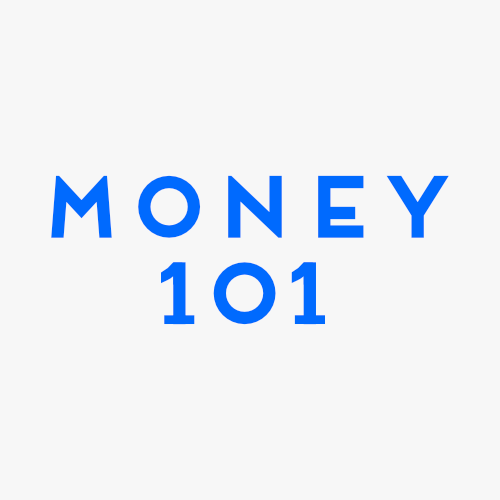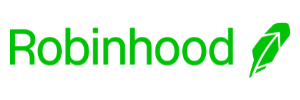How is it that some people pay all their bills on time, build a healthy savings account, make regular investments, and still have money left over to pay for all the fun things in life?
Most people assume that financially well-off people make more money and can effortlessly afford whatever they want.
Nothing could be further from the truth.
Anyone can build wealth at any point in their life and anyone can go broke, including the wealthy. It all comes down to how you handle and use your money.
Budgeting is the secret to financial security and long-term wealth, regardless of how much money you earn.
In this article, we show you how to budget your money and allocate your income to build financial stability and wealth, regardless of your income.
Here’s what you’ll learn:
- What Is Budgeting And How Does It Work
- Is Budgeting Worth The Effort?
- How To Budget Your Income
- How To Determine Your Monthly Income
- How To Allocate Income According To Your Lifestyle
- For Young And Single Business Owners
- For Single People With No Children, Mortgage, Or Business
- For Parents
- How To Make Tough Money Decisions
- How To Determine Wants Versus Needs
- How To Determine Whether You Can Afford Something
- How To Budget When Living Paycheck To Paycheck
What Is Budgeting And How Does It Work
When you earn a high income, a budget can help you spend intentionally while also building wealth and enjoying many of the things you dream of experiencing and owning.
When you don’t earn much money, such as when you think you’re “broke” or if you’re living paycheck-to-paycheck, developing a solid budget becomes a lifesaving tool that can help to pull you out of poverty.
No matter what your income or situation, developing a budget (and sticking to it) makes your money more valuable.
What Is Budgeting
Budgeting means that you plan out how you’ll spend your money.
Grown-up budgeting means planning how you’ll spend your money before you earn it.
If you budget poorly or if you wait to budget your money until it’s already in your pocket (or bank), there’s a good chance you’ll run out of money before your next paycheck.
Even if you make so much money that you don’t run out before payday, poor budgeting means you’ll waste one of the most valuable resources at your disposal; your money.
For example:
If you’ve got $10 in your pocket, you might plan on spending $5 on lunch and $5 on transportation to get home from work.
On the way home, you remember that you need milk for breakfast in the morning, so you make a pit stop to pick up a small container of milk.
Unfortunately, the $2 you spent on milk left you with only $3, which isn’t enough to get home.
Oops.
Technically, you did budget your money. However, you missed a few things along the way, leaving you to walk home five miles in the blazing heat — or call a friend and admit what a dumb mistake you just made. (Oh, and now your milk has probably gone bad too – double yikes)
Grown-up budgeting means making decisions about how your money gets spent before it hits your bank account.
Budgeting responsibly means writing down a projection of your income and all expenses in advance, preferably at the beginning of each month.
Budgeting also includes forecasting your income and expenses for months in advance so that you can save for the things that matter most and enjoy the life experiences you always dreamed of.
If you’ve tried budgeting and failed, or if you feel that you don’t make enough money to budget, or are just now getting started for the first time, the tips and suggestions below will help you take control of your money in a way that makes it more valuable.
You’ll discover how to live free of financial stress and how to start turning your money into an income-generating machine by budgeting a portion of your income toward investments.
If you’re already enjoying success in life, including the monetary rewards, the information below will show you how to increase the value of your income and build wealth over time.
Budgeting makes your income more valuable, no matter how much you earn.
How To Budget Your Income
Budgeting requires allocating your income.
“Allocating” means that you determine how you will distribute your income.
The first step in budgeting is understanding what categories of spending you need to plan for.
For personal budgets, you should allocate your income into three different categories: spending, savings, and investing.
#1 Spending Money
The “spending money” category refers to all of your living expenses, including:
- Rent or mortgage
- Utilities such as electric, gas, water, and internet
- Groceries and household items
- Clothes
- Haircare, skincare, cosmetics
- Prescription and non-prescription medicines
- Health, medical, car, home, and other insurances
- Fitness memberships
- Gifts
- Entertainment, including streaming services, restaurants, concerts, etc.
- Vacation and travel
- Services (landscaping, snow removal, music lessons, housekeepers, etc.)
- Gas and transportation costs
- Car and appliance repairs or purchases
Spending is the toughest category to control, and requires that you develop financial discipline.
When you first start budgeting, be prepared to make mistakes. It’s easy to underestimate what you spend or what you might need for everything.
The key to success with budgeting is part discipline (with your spending habits) and part accurately projecting what you’ll need.
Budgeting and financial discipline are daily practices that improve over time if you keep trying.
If your budget feels like a “fail” in the early months, keep adjusting your planning and spending habits until you can budget more accurately and spend more consciously.
#2 Savings
Savings is a temporary budget category.
Putting too much money in a savings account is like throwing money away because inflation devalues it at a much quicker rate than what the interest on it pays.
The average savings account pays .06% interest per year, but inflation drives up prices by 1-3% (2.6% in 2021) each year.
Even a high-yield savings account pays only about .50% annual interest, which means:
- If you keep $10,000 in an average savings account for one year, your money earns a total of one dollar all year (assuming a .05% interest rate).
- If you keep $10,000 in a high-yield savings account that pays .50%, your money only earns $50 throughout the entire year.
On the other hand, stock market investments return an average 9.2% per year — well above and beyond what’ needed to keep up with the cost of inflation.
A bank is a good place to store your emergency savings, but its low interest rates make it a poor choice for long-term investing.
However, it’s important to your well-being and the security of yourself and your family to build an emergency savings account.
Start with a $2,000 short-term savings account to cover basic emergencies such as car repairs, a broken phone, or a major appliance that needs repairs.
This basic emergency savings is so critical to your well-being that you should allocate all of your spare income towards it until you have the $2,000 in the bank.
Whether you need to move into a less expensive living situation or get roommates or cut out all your non-essential expenses, you should do whatever it takes to quickly build your short-term emergency savings account.
If saving $2,000 will take a long time, then consider picking up some extra work or a side hustle so you can build your short-term savings quicker.
Without short-term savings, your income is vulnerable.
If you can’t fix your car, getting to work may become a problem.
If you can’t repair a broken phone, you’ll have difficulty communicating with people at work — or getting a job if you need one.
If you can’t pay for a doctor, testing, and medications, a simple illness can prevent you from earning an income for months or longer instead of a few days or weeks.
You can prevent countless small financial emergencies with $2,000 in the bank. That’s why you should do everything you can, including picking up extra work and slashing your living expenses, to fund your short-term savings account quickly.
Once you build your short-term $2,000 emergency savings account, you’ll begin to allocate a specific percentage of your income toward a full emergency savings account.
Build a full emergency savings account, equal to six months’ living expenses, by allocating a portion of your earnings towards savings over time.
A full savings account can protect you from some of the most critical financial emergencies life will throw your way.
For example, if you lose your job or if a family member needs an expensive medical emergency, your savings account can provide lifesaving funds to keep you afloat during temporary setbacks.
Allocate a portion of your income toward savings until you’ve put six months of living expenses in the bank, at which point you’ll stop saving and funnel that portion of your income toward investments that help your money grow over time.
#3 Investing
The third and final category of income allocation is investing.
Since bank accounts don’t pay enough interest to keep up with the cost of living, you should allocate a portion of your income toward investments that allow it to grow over time.
Smart investing will help you keep up with the rising cost of living and help you build a more effective retirement strategy than traditional retirement plans.
There are many ways to invest your money:
- Stock market investing
- Real estate investing
- Starting your own business
- Investing in your future through education
Investing isn’t something you should wait to do “until you’re rich.” If you’re 20 years old, but you wait until you’re 40 to invest, you could lose millions of dollars.
The younger you are when you begin investing, the more wealth you can build over your lifetime.
For example, if you invest $360 per month into stock market investing beginning at the age of 20, you could retire a millionaire.
However, if you wait until your 40 to begin investing, you’d have to allocate $2,000 a month to achieve the same earnings.
If you’re in the midst of paying off debt or building your short-term savings, then investing a couple of hundred dollars per month may not be possible.
What you can do, on any budget, is allocate a portion of your income toward investment seeds or crowdfunded real estate.
Like anything, you get better at investing over time. Investing early isn’t only about your money’s growth rate — it’s also about learning the market so that you can make good investment decisions in the future.
We recommend allocating a portion of your income towards investing, no matter how young you are or what size income you earn.
Where Debt Fits Into Your Budget
Hopefully, you don’t have any debt to put in your budget.
If you do have debt, such as credit cards or student loans, it should take top priority in your financial planning.
Debit compounds itself over time and becomes harder to pay off with each passing month, thanks to skyrocketing interest rates, especially on credit cards and student loans.
That’s why it’s critical to pay off your debt as quickly as possible, and not take on any bad debt in the future.
What is bad debt?
“Bad debt” refers to loans and credit card situations where interest, fees, and other charges grow over time. If you make minimum payments only, or if you miss any payments, bad debt can bury you in fees and charges, making it harder and harder to pay off over time.
Not all debt is bad.
Responsibly using a credit card that offers cash back on every purchase, or other valuable perks, can work to your advantage.
Credit cards aren’t bad debt if you only use them to pay for things you can already afford, provided they offer you some nice perks without charging fees.
If you pay your credit cards in full at the end of every month — so they always have a zero balance at the beginning of each month — then you’ll never get in trouble with credit cards. This approach is “good debt” because it makes your money more valuable through cashback or other perks while also building a good credit score.
Home mortgages are another example of debt that’s not necessarily bad.
If you purchase a home that’s within your means using at least a 20% deposit AND you have a full emergency fund in place, a mortgage loan isn’t “bad debt.”
Bad debt can put you in a deep financial hole for years, requiring you to sacrifice countless opportunities and experiences such as a nice home, reliable car, family vacations, and quality health care.
If you have bad debt, you should allocate every penny possible toward paying it off as fast as you can. Consider picking up a side hustle or part-time job to speed up the process. Cut your living expenses dramatically, even if it means living with roommates.
Bad debt can run — and ruin — your financial well-being, and negatively affect your life experience.
If you have bad debt, do everything in your power to pay it off as quickly as possible, before allocating your income toward other things.
How To Determine Your Monthly Income For Budgeting
Before you begin planning how to spend your money, you’ll need to determine your monthly income.
If you have a job that pays you a predictable income each month, then this part of budgeting is simple, you’ll just need to take the amount you make per month after taxes, and subtract the total amount of all of your debts combined. That’s how much you’ll spend each month and the rest will be used for saving and investing.
However, if you don’t make the same amount each month, budgeting can be a bit trickier, but still very much possible.
How To Project Irregular Income
If your income is unsteady or irregular, such as if you’re new to freelancing or self-employment, or if you have a seasonal or weather-dependent job, you’ll project your income differently than people with steady incomes.
If you’re new to irregular income, here are a few tips to help project your earnings for effective budgeting:
- Budget your income conservatively.
- Create an extremely conservative spending plan, and put all additional income, bonuses, etc., in the bank until you’ve saved 3 – 6 months (depending on your profession) worth of expenses.
- This savings becomes your income backup, which is not the same as your emergency savings account.
- Once you’ve set aside 3 – 6 months (depending on how unpredictable your earnings are) of expenses as backup, you can estimate your monthly income based on your average earnings.
- For some workers, this means adding up three months of income, then dividing by three to determine your average monthly earnings.
- For seasonal workers or weather-dependent workers, this means averaging how much you made during the same month in the previous three years, then dividing that by three to create an estimate.
When you earn an irregular income, it’s critical to budget conservatively until you’ve built up enough financial security to ensure some stability.
Part of budgeting conservatively means not splurging on luxuries when you have months with bigger paychecks.
For example, celebrating your success with a special night out can create a fantastic memory, but splurging on a new car or luxury purchase could end in regret.
There may be slow months when an extra $300 means the difference between continuing with the work you do or going back to that retail job you despised.
The last thing you want is to return to a job you don’t like because you blew money on things you didn’t need.
Eventually, you get a more accurate feel for what income you can count on.
- Over the years, freelancers build a reputation or experience in their field that increases the chances that they always have work.
- Business owners typically develop more stability and success, making finances easier and more predictable.
- Seasonal workers often find side hustles or other work during the offseason that makes their finances run smoother.
However, during the early years of earning irregular paychecks, things can turn around quickly. You might earn $10,000 one month and zero for the next three.
By budgeting and spending conservatively, you can build a more predictable income that allows you to better form a reliable budget.
How To Determine Your Monthly Spending Needs
Determining your monthly spending needs is the most challenging part of any budget.
The more accurately you can predict what you spend, the more successful your budget (and financial health) becomes.
Some of the items to list in the spending portion of your budget may include:
- Rent or mortgage payments
- Electric
- Food
- Clothes
- Other utilities: internet, phone, water, etc.
- Insurances: car, health, homeowners or renters, and any other insurances you use
- Medical fees or co-payments, and prescriptions
- Over the counter medications
- Car payments
- Car maintenance, including gas, oil changes, registration, etc.
- Bank account fees
- Parking fees
- Other transportation costs
- Digital subscriptions such as news and cloud storage
- Streaming subscriptions such as Netflix, Hulu, HBO, etc.
- Memberships, such as gym, athletic, or professional memberships
- Other subscriptions, non-digital
- Home maintenance, including lawn care, snow removal, housekeeping, etc.
- Home goods such as kitchen and bathroom items, or replacement purchases for furniture, bedding, etc.
- Home upgrades or repairs
- Entertainment, including movies, theatre, restaurants, shows, coffee, etc.
- Gifts
- Charitable giving
- Pet care
- Vacation and travel expenses
- Home decor, artwork, antiques, and other furnishings
- Hobby supplies
- At-home activities such as DIY, crafts, woodworking, etc.
- Holiday expenses such as meals, decor, events, gifts, etc.
One way to sharpen your budgeting skills quickly is by writing down every dollar you spend for a few months.
Recording your spending habits allows you to evaluate your financial choices and determine what you’re allocating towards needs versus wants.
Writing down what you spend each month also helps you to learn budgeting and financial discipline quicker, so that you can get to work creating more value from the money you earn.
Once you learn to plan your spending and stick to a budget, you discover the real power of money: the ability to plan and save for the things that matter, to help the people or causes you care about, and to care for the health and well-being of your family.
How To Allocate Your Income According To Your Lifestyle
How you split your income between spending, saving, and investing depends on your lifestyle.
For example, if you’re young and single with no obligations or dependents, you would begin by investing more aggressively than someone who is married and supporting children.
In this section, we show you how to allocate your income according to your current lifestyle.
How To Allocate Your Income When You’re A Single Young Business Owner
If you’re young and running your own business without any family obligations, you’ll want to focus less on saving and more on investing.
For young, single business owners, we recommend allocating your income in the following way:
- 50% Spending
- 30% or more: investing into your business
- 20% Savings
Businesses, especially new ones, take a lot of investment to get off the ground and establish profits.
The 50-30-20 recommendation is a general guideline, but if you invest more than 30% into your business, it’s probably a good idea.
Startups, during the early years, typically demand that ALL of your earnings get invested in your business. Many new business owners keep their full-time job or pick up a side job to cover their living expenses.
The sacrifice business owners make to get their companies off the ground is significant.
However, you must keep in mind that while most other investments (such as stock market investing) provide you with an average of 5 – 10% returns, a business can earn more than 100% on your investment.
If you own a new business, cut your spending expenses dramatically and allocate as much as you can toward building your company. Remember that the sacrifices you make today will return as profits down the line!
How To Allocate Your Income When You’re Single With No Children, Mortgage, or Business
If you have no major expenses such as children, a mortgage, or a business, we recommend you save aggressively until you’ve fully funded your emergency savings account (equal to six months’ living expenses).
Once your emergency savings account is complete, you can allocate more toward spending and investing.
For single people with no children, mortgage, or other major expenses, we recommend allocating your income in the following manner:
- 50% Spending
- 30% Investments
- 20% Savings
If you’re still living at home with your parents and not paying any (or very much) rent, you can allocate even more toward savings and investments.
It should be easy to live on half of what you earn and put at least 20% of every paycheck into your savings account.
This is also an excellent time in your life to begin investing, so you can gain experience and understanding about your investments, whether they’re stocks, real estate, or entrepreneurial undertakings.
People who are single and without any serious financial obligations have a unique opportunity to improve their quality of life in the future.
Avoid throwing your money down the drain on things like drinking, fancy cars, and expensive clothes. These are luxuries that you will surely be able to afford later in life if you budget and invest wisely now.
If you purchase these things now, you’re putting your financial future at risk. So it’s better to wait until you can actually afford them.
This isn’t the time in your life to impress anyone. Instead, work toward an impressive future by securing your financial health and establishing a history of investing.
If you’re single and without any major financial obligations, live on no more than half of what you earn, save aggressively, and begin investing in ways that make your money grow.
How To Allocate Your Income When You’ve Got A Family To Support
If you’re supporting children, you’ll want to allocate your income in a way that slowly and steadily builds your savings account and investments.
Your child’s sense of well-being is one of the most important things you’ll spend money on during your lifetime.
Much of their health and happiness, such as a safe home, healthy food, and quality medical care, depends on your financial security. Living on just half of your income, the way that single people do, probably isn’t realistic or wise.
Parents should allocate more of their income toward spending that allows them to take good care of their children.
For parents, we recommend allocating your income in the following manner:
- 75% spending
- 15% investments
- 10% savings
Even though spending is critical when you have children, you also want to build your financial security in the form of a savings account.
- If your car breaks down, you’ll need it repaired immediately by a trusted mechanic.
- If you lose your job, you’ll need to continue putting a roof over your children’s heads and food on the table.
- If someone needs a medical procedure, you want doctors you trust and a treatment plan you can keep up with.
We recommend putting 15% of your income into your savings account until you’ve saved up six months of living expenses.
If saving six months of living expenses will take you more than six months or a year, consider picking up a side hustle, part-time work, or remote work to earn extra income and build your savings account more quickly.
Once your savings account is complete, you no longer need to keep putting money into it.
Parents with children should allocate 75% of their income toward spending, so they can provide for their children.
Consider picking up extra work to meet your savings goals quickly, so that you don’t run up against a financial crisis without a backup plan.
How To Make Tough Money Decisions
If you’re new to budgeting or have tried and failed in the past, you’re likely to face some tricky situations that leave you wondering “Is this expense a want or a need?” or “How do I know if I can afford this?”
Below, we answer some of the most pressing questions related to personal budgeting, to help you address those tricky issues.
How To Determine Wants Versus Needs When Budgeting
Some things are a good investment even though they quickly lose monetary value.
For example, buying a cozy new couch that lets your family snuggle up while watching a movie, or encourages your friends to relax and share a few laughs — is an excellent investment.
However, just because something’s a good investment doesn’t mean it’s a smart choice for your financial well being.
Some of the toughest budgeting decisions you’ll make will revolve around the gut-wrenching question of “Do I need it or do I want it.”
Determining your needs versus wants is a critical aspect of budgeting. Every time you make this decision, you’re building the healthy habit of prioritizing needs over wants.
Budgeting doesn’t mean that you can’t buy things that you “want,” even if they’re luxury items!
However, budgeting does require you to make those “want” purchases only after you've covered all your responsibilities. This means you’ll frequently have to save for items that you want instead of purchasing them spontaneously.
Some of the things that always fall into the “need” category include:
- Rent, electricity, food, and clothes
- Bills, including any debts you owe
- Health-related medical expenses
- Emergency savings account
- A running car and working phone (not a fancy car or the latest iPhone)
- Reasonable clothing budget
Outside of the basics, you can determine whether a purchase falls into the “need” or “want” category by asking yourself one simple question:
“What’s going to happen to me if I don’t buy it?”
This easy question will often have you laughing at your own logic.
For example, if you can’t buy that new couch you want, nothing bad will happen to you.
Your family will still cozy up for movies or storytime, and your friends will still be your friends – whether they’re on cushions, a couch, or folding metal chairs.
The next time you’re tempted to classify something as a “need” in your life, ask yourself what will happen if you don’t buy it.
How To Determine Whether You Can Afford Something
When your budget is running smoothly and you’re able to adhere to it over time, you’ll eventually fund your emergency savings account and pay off all your debt.
At that point, you’ll have more freedom to spend money on the things or activities you’ve been wanting to do for a long time — but how will you know where to draw the line?
For example, maybe you’ve been eyeing the latest electric bike for some time, imagining all the trips you can take, the fun you can have, and the weight you can lose if you purchase one.
The bike you’re looking at sells for $1,500, and you’ve got a $2,000 bonus check coming soon — does that mean you can afford the bike?
Not really.
A good rule of thumb to help you determine whether you can afford to purchase something is The Rule of Five:
“Can I afford to buy five of them?”
If you can’t afford to buy five of them, in cash, without dipping into your savings, bills, or expense money, then you can’t afford to buy even one of the items.
Following the rule of five will help you determine when to buy something and when to hold off until you save up for it.
The good news is that there are so many ways to bring down the price of nearly anything you might want to purchase:
- Looking for an e-bike? Check out last year’s models on eBay or Facebook Marketplace.
- Dying to do some travel? Check out Trustedhousesitters or Nomador, where you can find free places to stay in exchange for pet-sitting, or Couchsurfing, where you can stay on someone’s sofa for a fraction of the cost of a hotel.
- Wanting to take your date somewhere special? Check out local colleges and universities for quality concerts and shows, or attend an afternoon matinee instead of a prime-time movie.
Setting clear boundaries on how you’ll determine what you can and can’t afford is an excellent step toward financial success.
We recommend The Rule of Five, which requires you to have enough extra cash to purchase five of something before you buy one.
How To Budget When Living Paycheck To Paycheck
Trying to pull together, and stick by, a budget when you’re barely making enough money to live is HARD.
Rather than allow yourself to continue living so close to the financial edge, consider how you might change your situation.
If you’re having difficulty covering your bills and setting aside money for savings and investing, start by reviewing the entire spending portion of your budget:
- Are there spending habits, such as take-out food or Starbucks coffee, that you can cut to save money?
- Is there a way you can eat healthy while spending less on groceries, perhaps by cooking from scratch?
- Can you find insurance discounts that may lower your car, home, or health insurance rates?
- Are you paying too much in fees for services such as banking, news, or music & movie streaming?
If cutting back on your spending doesn’t make reasonable budgeting possible, then there’s only one solution: you need to earn more money.
Sometimes, there’s just no way to gain financial stability without earning more money.
The good news is that there are many ways to make extra money and plenty of side hustles that allow you to work from home (where you don’t need to pay for childcare, transportation, or wardrobe).
Earning extra money, especially while building your emergency savings account, is always a good idea.
If you’re living paycheck to paycheck, you are exceptionally vulnerable to financial emergencies. This type of financial stress puts you at high risk of landing yourself in a crisis situation and usually has a negative effect on your health.
To successfully budget for your future and protect yourself and your family, consider cutting your expenses or picking up a side hustle to enhance your income.
Budgeting Gives Your Money More Power
Budgeting your money before you spend it, and learning to stick to your budget, is the single best step you can take toward financial security.
Whether you work at a minimum-wage job or earn a six-figure salary, your long-term financial health (whether you end up rich or poor) relies on your ability to budget your income effectively.
Allocating your income toward spending, saving, and investing is the foundation of any responsible budget.
Getting a handle on your spending habits can pose a challenge, but once you master it, you gain control of your money and your future financial well-being.
How you allocate your income depends on your lifestyle, but before you can truly allocate an effective budget, you must pay off any high-interest debt you are carrying.
High-interest debt is bad debt because it becomes harder to pay off over time, and results in you having to pay back far more than you ever borrowed.
Allocating a portion of your income to an emergency savings account is critical, but temporary.
Once you’ve set aside six months of living expenses, you can stop saving and funnel the extra money into spending and investments that make your money grow over time.
Budgeting is for everyone, regardless of your age or income. Approaching it in a responsible manner means a healthier, more promising future for you and your family.
















